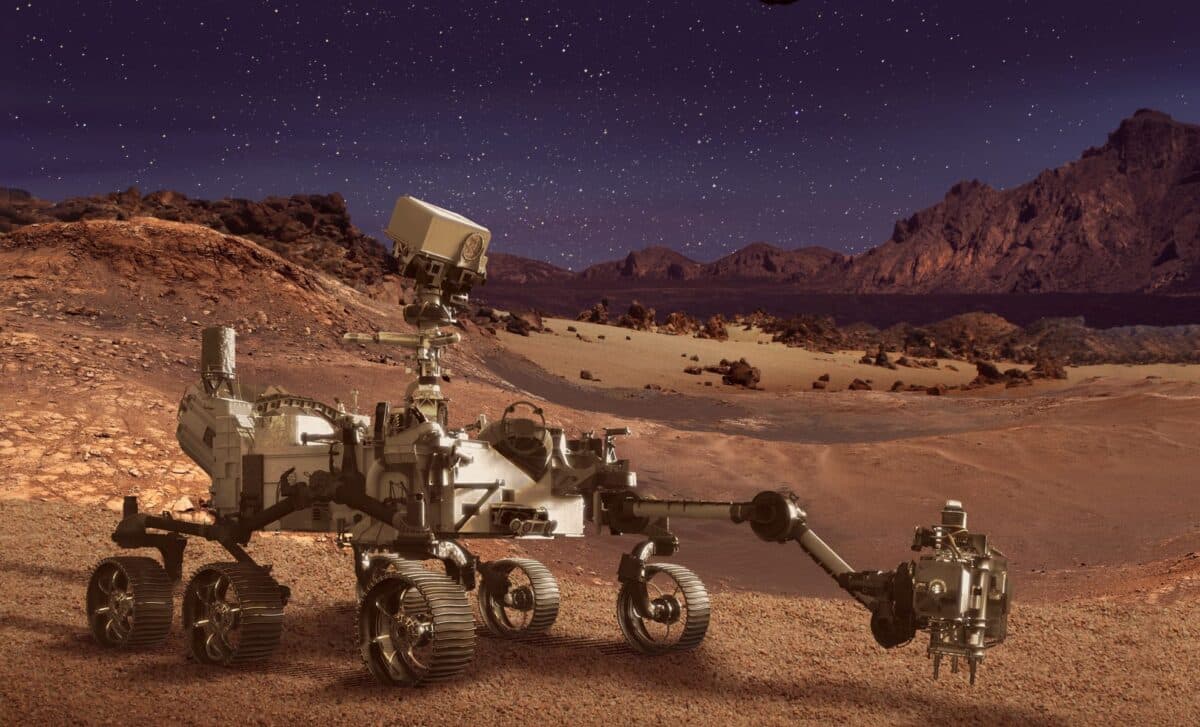NASA’s Perseverance rover has just delivered an extraordinary image of Mars, offering a stunning panoramic view that is the clearest ever captured. The photograph, created by stitching together 96 separate shots, was taken on May 26, 2025, from a location on Mars known as “Falbreen.” The resulting mosaic not only showcases the planet’s breathtaking landscape but also provides scientists with invaluable geological insights.
The stunning photo was made possible by Perseverance’s Mastcam-Z instrument, which took advantage of Mars’ relatively dust-free skies. These pristine conditions allowed for unprecedented clarity in the image, which highlights a variety of Martian features. But the image is more than just a work of art, scientists are also eagerly studying it to learn more about Mars’ geological history and its potential for hosting ancient life.
Mars’ Geology in a New Light
An important feature in the panorama is the discovery of a “float rock” near the rover. This large boulder, located just 14 feet away from Perseverance, is believed to have originated from a different location before being transported to its current spot by natural forces like wind, water, or a landslide.
According to Jim Bell, principal investigator for Mastcam-Z at Arizona State University, this rock’s position helps scientists better understand the forces that have shaped the Martian landscape over billions of years.
“The relatively dust-free skies provide a clear view of the surrounding terrain. And in this particular mosaic, we have enhanced the color contrast, which accentuates the differences in the terrain and sky.”
In addition to the “float rock,” the image also reveals a variety of other geological features, including sand ripples and mountainous terrain about 40 miles away from Perseverance’s location. These features not only provide a clearer view of the planet’s surface but may also help scientists identify specific areas for future exploration as they investigate Mars’ long history of erosion and geological transformation.
An incredibly detailed image of Mars captured by ESA’s Mars Express spacecraft, from the north polar ice cap, to the cloud covered Hellas Planitia in the south, the largest impact crater on Mars.
📸: ESA/DLR/FU Berlin pic.twitter.com/H2L8XVyzwL
— Wonder of Science (@wonderofscience) October 27, 2025
The Quest for Life on Mars: Perseverance’s Mission
Perseverance’s mission focuses on gathering rock and soil samples that could reveal signs of ancient microbial life on Mars. Launched as part of NASA’s Mars 2020 mission, the rover is equipped with advanced geological tools to drill and collect samples for future analysis on Earth. Scientists believe that the Red planet, billions of years ago, may have hosted flowing rivers and lakes, making it a promising candidate for past life.
Perseverance’s drill creates small “abrasion patches” on the Martian surface, which are visible in the latest panoramic image. One of these patches, located near the center-left of the photo, measures just a couple of inches wide. NASA is particularly focused on the region called Falbreen, as it may be some of the oldest terrain the rover has encountered, possibly even older than the Jezero Crater, where Perseverance originally landed in 2021.
Setting the Course for Perseverance’s Next Phase
With such a detailed view of the landscape, scientists can now pinpoint the best spots for further exploration, using the data to guide the rover’s path. By studying the “float rock” and the terrain around it, researchers aim to track the rock’s journey and learn more about the planet’s geological past.
This mission is also helping pave the way for NASA’s bigger goal of sending humans to Mars. Sean Duffy, acting NASA administrator, mentioned that the breathtaking views captured by Perseverance are just a preview of what astronauts might one day see in person. NASA’s Artemis program, which is focused on returning humans to the Moon, is seen as the first step toward a manned mission to Mars, and the findings from Perseverance will be crucial in getting us there.

